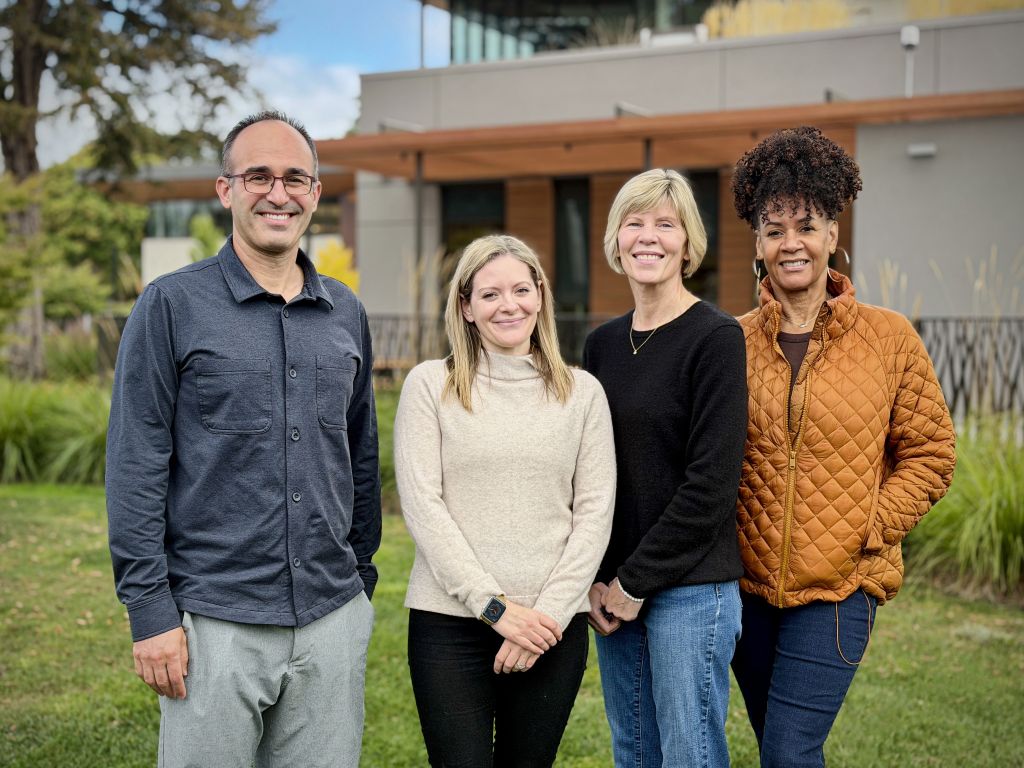Belmont
Belmont Woods
Belmont Woods neighborhood offers great views, outdoor opportunities and serenity
Belmont Woods contains one of the city’s finest subdivisions, some of its newest subdivisions, almost all of its large- scale apartment complexes and some of its most wide-open, uninhabited land, featuring protected open space and an extensive series of hiking trails running from Ralston Avenue all the way into San Carlos. It includes Water Dog Park and Lake and a post-war subdivision whose street names (Lassen Drive, Yosemite Drive, Tahoe Drive) were a sarcastic suggestion by local historian Russell Estep, who thought the developer may as well be building houses on Mount Lassen, so far were they from Belmont’s center. Homes here sell more rarely than in other neighborhoods, with only a handful selling in recent months.
Hallmark homes are at the top of the Belmont market, lately selling for $1.575 million and up. At the other end of the property spectrum is Belmont Woods’ large collection of apartment buildings, located at the neighborhood's northeast corner along Carlmont Drive and Lake Road. Here you will find studios, one-, two- and three-bedroom units with parking and private terraces in complexes like Carlmont Woods (efficiency studios beginning at $1,507 per month) and Davey Glen (one-bedrooms for $2,840, two-bedrooms for $3,365). Some are located within a short walk of Carlmont Village, Carlmont High School and the Belmont Public Library.
In-between are single-family homes like those found in the tidy neighborhood belittled in 1946 by Russell Estep. Buyers on Yosemite, Lassen and Tahoe Drives pay between $1.5 and $2.4 million for their late 1950s-vintage one- and two-story homes. These properties range in size from approximately 1,300 to 1,700 square feet and sit on lots measuring 6,000 – 8,000 square feet and – contrary to Mr. Estep’s original evaluation – list among their charms proximity to the 280 freeway, giving them easy access to Silicon Valley and San Francisco.
Another area Belmont Woods neighborhood clings to steep, winding Hastings Drive, offering its residents solitude and wide-open views. This housing tract, built in 1977 and 1978, is comprised of two-story single-family homes and town homes with three bedrooms and over 2,000 square feet of living space, generally selling for between $1.6 and $1.9 million. Meanwhile, one of Belmont’s newest neighborhoods sits at the end of Carlmont Drive, giving residents excellent access to the city’s network of hiking trails. Homes here were built in the late 1990s, measure approximately 2,000 – 2,200 square feet in size, sit on large lots and sell for upwards of $1.5 to 3 million.
Its population is smaller than that of its surrounding neighborhoods, but Belmont Woods, still brims with the mostly post-war housing diversity that Belmont is known for. For its residents, it also offers great views, outdoors opportunities and serenity.
-
1019
Homes
-
$3.23M
Median Sale Price
-
$3.2M
Average Sale Price
Pricing data based on single-family homes
On this page
Belmont Woods
Stats & Trends
Home Data
Per tax records
2 Bedrooms
27
homes
3 Bedrooms
431
homes
4 Bedrooms
446
homes
5+ Bedrooms
115
homes
Condos/Townhomes
150
homes
2022 Price Data
Number of Sales
18
sales
Percent List Price Received
121.2%
Median Sales Price
$3.23M
Average Sales Price
$3.2M
Lowest Sales Price
$1.91M
Highest Sales Price
$4.6M
Belmont Woods on the Map
Schools & History
History
Like the U.S. as a whole, Belmont began in the east and expanded westward. Before World War II, for example, Belmont Woods was almost entirely uninhabited. As a point of context, consider Carlmont High School. It opened in 1953. Before that, its site, located right along the edge of Belmont Woods at Alameda de las Pulgas, was hayfields and pear orchards.
There was a school in Belmont Woods before 1953: William Reid’s school for boys opened in 1885 on 29 acres west of the Alameda (which has been re-routed since; today the school would straddle the dividing line between Belmont Woods and Carlmont). Reid, the former president of the University of California, charged $750 for lower school tuition, $900 for upper school, hoping to create, in Belmont, a school to rival the Eton School in England.
The Reid School was sold to the Archdiocese of San Francisco in 1918. In the years following, the Archdiocese struggled financially, eventually turning over the property to the Sisters of Mercy, who ran it as the St. Josephs’s Military Academy until 1952, when it became part of the Immaculate Heart of Mary church parish school.
Belmont Woods was also home to one of Belmont’s sanitariums, “Miramonte,” owned by Caesar Splivalo, the “Macaroni King” of San Francisco. Splivalo’s sanitarium specialized in the treatment of pulmonary diseases. Its original grounds, unsurprisingly, are now home to an apartment complex.
No one can blame Russell Estep for feeling dubious about Belmont Woods development when builder Tom Culligan came to him in 1946. Highway 280 was 20 years in the future and Belmont’s western quadrant was still largely unpopulated. Time has proven Estep wrong, however. In 2013, Lassen Drive is a popular address and Hallmark is arguably Belmont’s premier neighborhood.

Contact Raziel to find the right property for you.
With a team of experts guiding you every step of the way, our extensive knowledge and experience will ensure you have the best home buying experience possible.




